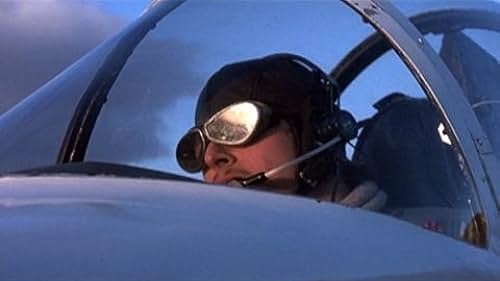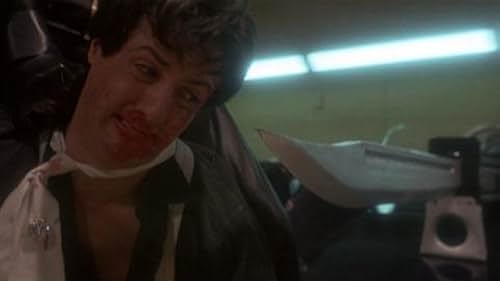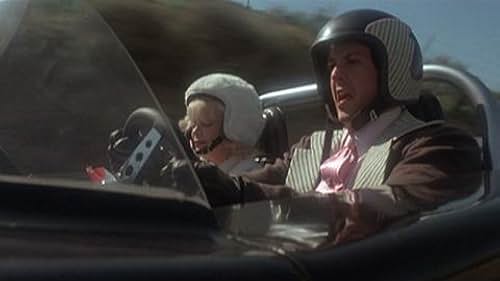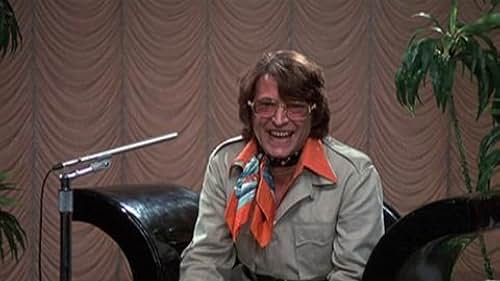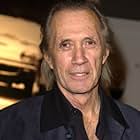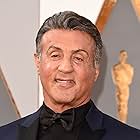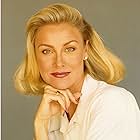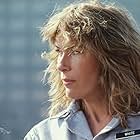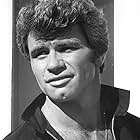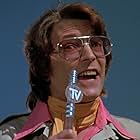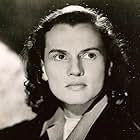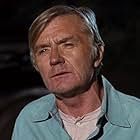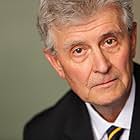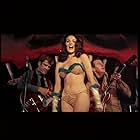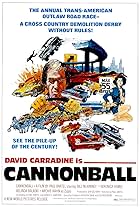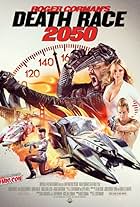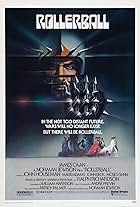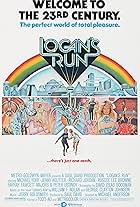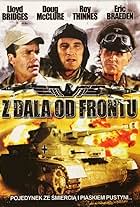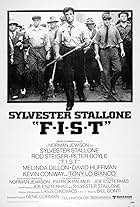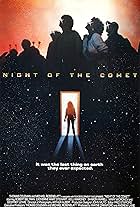In a dystopian future, a cross country automobile race requires contestants to run down innocent pedestrians to gain points that are tallied based on each kill's brutality.In a dystopian future, a cross country automobile race requires contestants to run down innocent pedestrians to gain points that are tallied based on each kill's brutality.In a dystopian future, a cross country automobile race requires contestants to run down innocent pedestrians to gain points that are tallied based on each kill's brutality.
Don Steele
- Junior Bruce
- (as The Real Don Steele)
Paul L. Ehrmann
- Special Agent
- (as Paul Laurence)
- Director
- Writers
- All cast & crew
- Production, box office & more at IMDbPro
Storyline
Did you know
- TriviaExplaining why he took the role of Frankenstein in this film, David Carradine said "I started that picture two weeks after I walked off the Kung Fu (1972) set, and that was essentially my image, the "Kung Fu" character, and a lot of people still believe I'm that guy. The idea actually was: No. 1, if you walk off a television series, you better do a movie right away or you might never get to do one. And the second thing was to do something right away that would create the image of a monster to get rid of the image of that little Chinese guy that I'd been playing for four years. And, you know, it did kick-start my movie career."
- GoofsAt about 1:05:00 into the film, the airplane holds just one bomb but, nonetheless, multiple explosions occur when it attacks.
- Quotes
Machine Gun Joe VeTurbo: You know, Myra, some people might think you're cute. But me, I think you're one very large baked potato.
- Alternate versionsThe original UK cinema version was cut by the BBFC to remove a head crushing scene and to edit shots of blood spurts from the car killings and a man's groin being stabbed with Joe's bayonet. All later releases were uncut.
- ConnectionsEdited into Hollywood Boulevard (1976)
Featured review
The B-film industry was once a thriving staple of Hollywood, with directors of all walks and ideals being able to make a film as long as they could raise the cash. Roger Corman, a producer and director among many other things, is one embodiment of the independent spirit. Producing over three hundred films in his career, his name is virtually synonymous with B-level schlock, and it is his productions that have given many of today's major stars their start. In fact, you will find three very familiar faces gracing Death Race 2000. Death Race 2000 is one of his more extravagant productions, but do not let that fool you. Even in 1975, the three hundred thousand dollars he spent on Death Race 2000 would have equaled lunch money on The Godfather Part II, released the previous year on a comparatively lavish budget of thirteen million dollars. While I like both films equally, Death Race 2000 impresses me more simply because it manages to entertain me from start to finish without spending enough money to fund an emergency ward for a month.
Death Race 2000's plot is simple enough. Five drivers in customised cars drive across a repressive American dictatorship, starting on the East Coast before making their way to New Los Angeles. Along the way, they may run over any pedestrians for certain scores. Rather than simply being the first to cross the finish line, the winner is he who can accumulate more points than the others. It is this critical difference compared to other racing films from which much of the comedy is derived. Those who have seen the film before will remember Euthanasia Day with a lot of fondness, and the utter incompetence of the resistance movement is hilarious in itself. But the real comedy derives from the individual drivers and their personalities. By far the most normal driver in the competition is Calamity Jane, a woman with a cowgirl fetish and metallic bullhorns on the front of her car. Coming next is Nero The Hero, who will look very familiar to viewers of The Karate Kid. His whole shtick revolves around being a Roman Gladiator, but the film does not really give him enough time to develop it.
Things get really interesting with racer number three, Matilda The Hun. Sporting Nazi symbolism and screaming "Blitzkrieg" whenever she scores a pedestrian, she is the least subtle indication that the makers had their tongues firmly in their cheeks during the creation of the film. Next are the two big rivals in the competition. Sylvester Stallone plays "Machine Gun" Joe Viterbo like a cranky adolescent who has snorted too much cocaine. There is literally nothing on the road he will not kill, and Stallone's trademark slurred speech suits the character to a T. But the real star of the story is Frankenstein, the other previous race winner and a friend of the President. David Carradine plays Frankenstein like a C-grade Darth Vader, delivering much of the comedy. His diversion on Euthanasia Day and the moment where he kicks Stallone's butt are worth watching the film for by themselves. Learning about why he wants to win the race, and what he will do in order to accomplish it, are hilarious in and of themselves. You can sort of see why Carradine and Stallone went on to become headlining stars whilst Kove enjoyed a brief career as the lead villain.
Death Race 2000 is as dated as hell, let's not kid ourselves. The matte painting of the starting race track is more obvious than an undone bluescreen effect. The blood is so fake that it looks pink at times. The editing makes it very confusing to see how one is getting run over, or who is punching whom during the aforementioned Carradine/Stallone altercation. On the other hand, its story of a dictatorship America that uses sport as an opiate for the masses, its portrayal of the media, and its depiction of blind obedience are timeless. They are even more relevant thirty years on than when the film first premiered. I like to think of the incompetent resistance movement as an indictment of the fact that we would have a better government if we had a credible or even opposing opposition. Seventy-nine minutes is too short a time to go into these political subplots at all, but that Death Race 2000 touches on them at all when far more serious and lengthy films made years later cannot even consider them is a credit to Corman and his company. Death Race 2000 is one of those films that should be preserved in a time capsule for the edification of future generations.
I gave Death Race 2000 a seven out of ten. Were I making it today, there are a few things I would do differently. The television segments would have been filmed using video or line removal rather than a camera at a television screen, for instance. Balancing this out, however, is the fact that so many of the shots are so effectively composed that it is no wonder Tak Fujimoto went on to become a multi-award-winning Hollywood cinematographer. In short, if you have not seen Death Race 2000 yet, then grab the new Roger Corman Classics DVD. It will be the best B-film, in fact one of the best films period, you will see all year.
Death Race 2000's plot is simple enough. Five drivers in customised cars drive across a repressive American dictatorship, starting on the East Coast before making their way to New Los Angeles. Along the way, they may run over any pedestrians for certain scores. Rather than simply being the first to cross the finish line, the winner is he who can accumulate more points than the others. It is this critical difference compared to other racing films from which much of the comedy is derived. Those who have seen the film before will remember Euthanasia Day with a lot of fondness, and the utter incompetence of the resistance movement is hilarious in itself. But the real comedy derives from the individual drivers and their personalities. By far the most normal driver in the competition is Calamity Jane, a woman with a cowgirl fetish and metallic bullhorns on the front of her car. Coming next is Nero The Hero, who will look very familiar to viewers of The Karate Kid. His whole shtick revolves around being a Roman Gladiator, but the film does not really give him enough time to develop it.
Things get really interesting with racer number three, Matilda The Hun. Sporting Nazi symbolism and screaming "Blitzkrieg" whenever she scores a pedestrian, she is the least subtle indication that the makers had their tongues firmly in their cheeks during the creation of the film. Next are the two big rivals in the competition. Sylvester Stallone plays "Machine Gun" Joe Viterbo like a cranky adolescent who has snorted too much cocaine. There is literally nothing on the road he will not kill, and Stallone's trademark slurred speech suits the character to a T. But the real star of the story is Frankenstein, the other previous race winner and a friend of the President. David Carradine plays Frankenstein like a C-grade Darth Vader, delivering much of the comedy. His diversion on Euthanasia Day and the moment where he kicks Stallone's butt are worth watching the film for by themselves. Learning about why he wants to win the race, and what he will do in order to accomplish it, are hilarious in and of themselves. You can sort of see why Carradine and Stallone went on to become headlining stars whilst Kove enjoyed a brief career as the lead villain.
Death Race 2000 is as dated as hell, let's not kid ourselves. The matte painting of the starting race track is more obvious than an undone bluescreen effect. The blood is so fake that it looks pink at times. The editing makes it very confusing to see how one is getting run over, or who is punching whom during the aforementioned Carradine/Stallone altercation. On the other hand, its story of a dictatorship America that uses sport as an opiate for the masses, its portrayal of the media, and its depiction of blind obedience are timeless. They are even more relevant thirty years on than when the film first premiered. I like to think of the incompetent resistance movement as an indictment of the fact that we would have a better government if we had a credible or even opposing opposition. Seventy-nine minutes is too short a time to go into these political subplots at all, but that Death Race 2000 touches on them at all when far more serious and lengthy films made years later cannot even consider them is a credit to Corman and his company. Death Race 2000 is one of those films that should be preserved in a time capsule for the edification of future generations.
I gave Death Race 2000 a seven out of ten. Were I making it today, there are a few things I would do differently. The television segments would have been filmed using video or line removal rather than a camera at a television screen, for instance. Balancing this out, however, is the fact that so many of the shots are so effectively composed that it is no wonder Tak Fujimoto went on to become a multi-award-winning Hollywood cinematographer. In short, if you have not seen Death Race 2000 yet, then grab the new Roger Corman Classics DVD. It will be the best B-film, in fact one of the best films period, you will see all year.
- mentalcritic
- Jan 26, 2006
- Permalink
Sylvester Stallone's Most Iconic Roles
Sylvester Stallone's Most Iconic Roles
We're celebrating the iconic Sylvester Stallone with a look back at some of his most indelible film performances, from Rocky and Rambo, to Joe in the new superhero movie Samaritan.
- How long is Death Race 2000?Powered by Alexa
Details
- Release date
- Country of origin
- Languages
- Also known as
- Frankensteins Todesrennen
- Filming locations
- Production company
- See more company credits at IMDbPro
Box office
- Budget
- $300,000 (estimated)
- Runtime1 hour 20 minutes
- Sound mix
- Aspect ratio
- 1.85 : 1
Contribute to this page
Suggest an edit or add missing content


